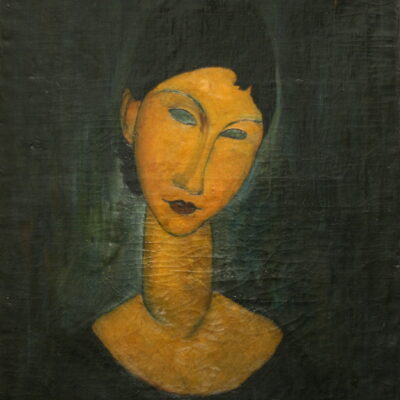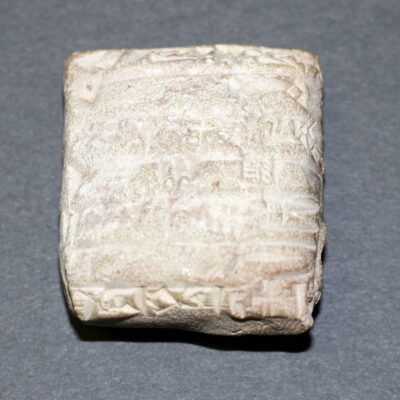
“A museum linked in partnership with a library forms the two halves of the public’s memory of the past.” These are the words of John Dewey, an American philosopher and founder of the progressive educational movement during the early 20th century. Dewey recognized the powerful impact that both museums and libraries can have on public education.
Dewey’s philosophy is the inspiration behind Rosenberg Library’s exhibit, From Our Attic: Awesome, Odd, and Exotic Treasures from the Rosenberg Library Museum Collection. This special exhibition featured an unusual array of artifacts from the Library’s permanent museum collection.
The Beginnings of a Museum
When Rosenberg Library opened its doors in 1904, it became the city’s first public repository for not only books but for historical objects, art, and archival materials which documented the history of Galveston and early Texas. As early as 1905, residents were calling for a museum in the city and cited Rosenberg Library as the appropriate facility to collectively house the many valuable relics stored in various island locales. Civic organizations as well as individuals began to donate paintings and other art objects to decorate and beautify the city’s new library.
Shortly after the Library’s establishment, a large collection of historical documents, maps, books, and relics were deposited and later formally donated by the Texas Historical Society of Galveston. This created the foundation for what evolved into the Library’s Special Collections Department which includes both the Archives (housed in the Galveston and Texas History Center) and the Museum divisions.

While the Library did not have a designated space to display its growing “museum” collection, it continued to collect and display these gifts in various exhibit cases placed throughout the building. During the 1950s, the library building underwent its first major renovation in order to better meet the changing needs of the community. The 700-seat auditorium was divided into several separate rooms, one of which was used for historical exhibits. It wasn’t until the opening of the Moody Memorial Wing in 1971 that formal exhibit galleries became part of the Rosenberg Library facility.
Collecting Practice
Over the last 109 years, the Library’s museum collection has grown to include well over 7,000 works of art and historical artifacts. While the Library exhibits are regularly rotated and updated to showcase different materials, it is impossible to display the entire collection at any given time due to space constraints and preservation concerns. For this reason, the vast majority remain in climate-controlled storage areas on the Library’s attic level while not on display.
During the past several decades, small museums like that at Rosenberg Library have formed a better understanding of professional standards and collecting practices. In the 1980s, Rosenberg Library’s Board of Directors adopted a formal acquisitions policy which narrowed the collecting focus to items directly related to the people, places, and events which shaped the history of Galveston and early Texas and to artworks which are of museum-quality.

However, no such policies were in place during the earlier years of the Library’s existence, and as a result, the collection includes strange, exotic, and unusual items from all ends of the earth. From Our Attic showcases many of these rarely exhibited artifacts and works of art.
Collection Highlights
Several art forgeries have been discovered in the Museum collection, including a portrait of a woman with an elongated neck and almond-shaped eyes in the distinctive style of Amedeo Modigliani, an early 20th century avant-garde artist. Rosenberg Library hired a professional firm to evaluate and authenticate this work in 2013.
With the generous help of Dr. Eric Walser and his staff at UTMB’s Department of Radiology, x-ray images of the canvas were made in an attempt to reveal hidden clues about the origin of the painting. In the end, it was found to be an early fake, though the identity of the forger remains unknown. Original, documented works by Modigliani sell for millions of dollars at auction.
Another very ancient highlight of the collection is a baked clay tablet with cuneiform inscriptions. “Cuneiform” refers to wedge-shaped characters used in ancient Sumerican, Assyrian, Babylonian, and Persian writings.

The tablet was donated by Dr. Edgar J. Banks, a U.S. diplomat, archaeologist, and scholar who gave a series of lectures on ancient antiquities at the Rosenberg Library in the early 1900s. Banks is said to have been the inspiration behind the fictional character “Indiana Jones.”
Also included in the exhibit are pieces of Japanese samurai armor, a 150-year old hardtack biscuit from the Civil War, artifacts from ancient Egyptian tombs, and a pufferfish skeleton. These are just a few of many wacky and wonderful items on display.
Rosenberg Library gratefully acknowledges all donors who have shared their family papers and heirlooms over the past eleven decades. These generous contributions have allowed for the long-term care and preservation of the treasures that tell that the fascinating story of Galveston Island’s past.